CTS-V is NOT your grand-dad’s Cadillac
By John Gilbert
At first touch, you know you’re in a high-performance sports coupe. Hit the ignition and a lot of power roars to life. Click the 6-speed manual shifter into first gear, let out the clutch, and as it engages, hammer the gas pedal, resulting in a tremendous surge forward — exhilarating, in fact. This is not only power, it’s supercharged power, measuring 556 horsepower and 551 foot-pounds of torque.
The steering wheel feels thick and substantial to your grip, although if it’s real leather, it is “sueded” to the point of feeling artificially fuzzy. It is easy to grip, the easier to hang onto, as you upshift smoothly into second. You get to second in what seems to be very sudden elapsed time, and while hitting the throttle again gets you up into the revs quickly before you hit third, then fourth, the power surges at each new gear and each new tap of your right toe.
Now you sweep through a curve, and the steering and suspension feel well-matched, and as the Recaro bucket seat grips your body as perfectly as your hand grips the wheel, you carve an easily prescribed line through the curve. Very impressive, and outright fun. It would have the same appeal to an aging hot-rodder as the blatant musclecars of 40 years ago, but with so much more refinement that you don’t ever consider calling it retro.
No, it is not a hot-rod in the traditional sense. Turns out, it’s a Cadillac. But not just any Cadillac, either. This is the new CST-V Coupe, a car that began life on the auto show circuit as one of those dream concepts that, it seemed,would never reach production stage, not with General Motors falling toward its bankruptcy bottoming-out a few years ago. The CST-V is what one of those hot-rodders from a previous era might demand to own if they’d grown up and become wealthy, without ever losing the memory of the thrill of hot cars.
The powertrain is behind the scenes, although it’s never too far behind anything, really. The tailpipe trumpets tip off what’s in the CTS-V, for those unaware of what the lettered badges mean. In the 2011 CTS-V, it means a 6.2-liter V8, with a supercharger fitted on to slam a force-fed blast of air into the intake manifold, sucking in large quantities of premium fuel in order to make 556 horsepower.
Who would have ever thought that Cadillac would venture into the hot-rod business? Even if they’re recovered nicely, with the government bailout loan and reorganization, we might not have foreseen the building of such high-performance rockets on the rebound. Cadillacs always have meant stately luxury cars, usually on the very large side. When the CTS came along, it was a nicely chiseled midsize car, appropriate for the era of less ostentatious conveyances.
It still fits that description of chiseled and properly downsized to midrange, but for 2011, you can find it in a couple of different derivations — a station wagon, and a coupe. Both the wagon and the coupe take the chiseled look to new heights of attractiveness. You can get it with rear-wheel drive or all-wheel drive, and while some purists will demand the rear-drive layout, having AWD makes it more attractive to those who live in the snow belt.
Then there is the CTS-V. This was aimed directly at competing with the hottest autobahn screamers from German luxury car-makers. Cars such as the BMW “M” models, Mercedes with its AMG performance branch, and Audi, with its “S” versions, have owned that segment. The CTS-V fits well, from a pure performance standpoint, as well as by looks, and handling, and price.
You’ll spend over $60,000 to obtain your own proof that a U.S. luxury car-builder can build something so very German-like. The test-drive vehicle I had for a week was $69,440 after adding over $7,000 of options, mainly the genuine Recaro butt-clinging seats, the 19-inch satin-graphite wheels, through which you can see yellow brake calipers on the usually-red Brembo brakes, and the “midnight Sapele wood trim” package, as well as the “sueded steering wheel and shifter.” The promo blurb doesn’t say where you might find “sapele” wood, or whether you must harvest it at midnight, nor does it say “suede leather,” saying only “sueded.” Somebody said it was real leather, but its fuzziness leaves me skeptical.
The suspension is exceptional, using the magnetic ride control GM came up with for its Corvette and Cadillac XLR sports cars a decade ago. It has little tiny metallic slivers floating around in a substance inside the shock absorbers, so that when the computer senses a turn, it also senses if it’s sharp or abrupt, and instantly it signals the electromagnetis shocks to snap those slivers to attention, thus firming the shock. You don’t know all that’s going on, of course, you only know that this Cadillac puts to rest the old notion that Cadillacs are so soft they have to have plenty of lean and roll to prove it. This buggy stays flat, through the tightest turns.
You can get the CTS without the “V” and it is an impressive, real-world car on its own, with a direct-injection version of the 3.6-liter V6, with its dual overhead camshafts and four valves per cylinder. That has 304 horsepower and 273 foot-pounds of torque — more than enough to zip the Coupe around, even if it does weigh 4,000 pounds.
Moving up to the CTS-V, though, will get prompt and continual notice. My son Jack, who assists me on test-drives and shoots some photos as well, noticed on his first drive around town that people noticed the car. “I was stopped twice by people who wanted to take pictures of the car,” he said. Jack’s other comment matched my impression. “There’s so much power, but it didn’t feel brutish that way some cars do,” he said. “And the transmission was great — no skip-shift.”
Two issues here. First, in GM’s “BB” days — before bankruptcy — all other GM brands used pushrod V8s and pushrod V6es, but to set Cadillac apart, its engineers developed a high-tech, 4.6-liter V8, with dual-overhead-cams and four valves per cylinder. Maybe that was just to silence the many critics, this one included, who bemoaned the fact that GM was the only major manufacturer left in the world that compromised technology for expense in every case. Using pushrods to run from the crankshaft up to the valvetrain limited the engines’ ability to rev as high, and made it work harder at fewer RPMs.The only reason was cost, by all accounts.
Cadillac later came up with the 3.6 V6, and had a perfect complement. Despite the fact that overhead cam engines cost more to build and to develop, GM allowed versions of that “Northstar” V8 to trickle down to other branches, and the 3.6 finally, and thankfully, replaced the raspy 3.8 pushrod V6es in all other lines.
When the XLR first came along as a two-seat sports car, it had the high-tech overhead cam engines, which set it apart. Even the Corvette still used the traditional old pushrod “small block” V8 it had popularized, and it was always less expensive to simply make that engine larger and larger in displacement. I once challenged Cadillac engineers that they could make the XLR more powerful than the Corvette, because they had the great potential of dual overhead cams at their disposal. Finally one high-ranking engineer said, “You just wait.” Not long after that, an amazing supercharged version of the 4.6 V8 was introduced, and the XLR indeed could challenge the Corvette for supremacy, despite having more than one full liter less in displacement.
It was, of course, extremely costly. So it is with mixed feelings that I note the engine in the CTS-V. It is a derivative of the Corvette pushrod V8, now at 6.2 liters, with pushrods instead over overhead cams. When I asked why, I was told that General Motors no longer produces the 4.6-liter Northstar V8. It has gone the way of the Dodo bird, the Oldsmobile, and the Saturn, not necessarily in that order.
GM engineers have done an amazing job of finding ways to extract enormous quantities of horsepower out of those pushrod V8s, and the Corvette now has a 7-liter version, along with the supercharging trick.
Most consumers won’t realize that when they hammer the CTS-V, leaving behind all sorts of other high-performance cars, it also leaves behind a little bit of technology. In the process, fuel economy takes a hit, too. EPA estimates are 14 miles per gallon city, 19 highway, and we couldn’t get it over 18.
The transmission is perhaps the most significant improvement. You can get a Hydramatic 6-speed automatic, but if you think front-engine/rear-drive performance cars deserve a stick shift, try the 6-speed manual. Starting with the Corvette, and finding its way to Camaro and other GM high-performance vehicles, GM engineers learned to fool the EPA fuel economy computers with something called a skip-shift. If you started up hard, the shifter went from first to second easily, but if you started up moderately, when you went to shift from first to second, the shifter would be diverted to the right and land in fourth. If you weren’t paying attention, you would just think that your giant engine had no torque anymore.
If you were paying attention, it was maddening, especially if you were like I am, and like to start out moderately, then hit second before stepping on it hard to run the revs up. Every time, I would go first to fourth, and have to wrestle the shifter back into second, accompanied by a torrent of well-chosen words. To me, it would be a deal-breaker if I’d been considering purchase of any such car.
Cadillac has gotten wise and installs an Aisin AY6 manual transmission in the CTS-V. You can rev it high or low in first, and still go right into second. Smooth and slick. Aisin, a Japanese firm, builds those transmissions in Mexico. Hooked up to the blown 6.2 V8, it is a perfect match, and you can extract all those gobs of power in evrey gear.
The CTS-V standard equipment includes Stabilitrak, GM’s name for stability control, 10-way power seats for both driver and front passenger, high-intensity discharge adaptive headlights, foglights, Bluetooth, headlight washers, front-side-head curtain airbags,
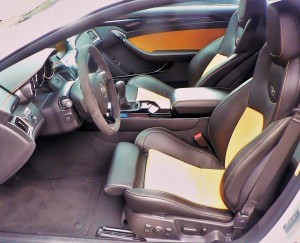
Genuine Recaro bucket seats are unparalleled, furry steering wheel is...different. (Photo by Jack Gilbert.)
rear-vision camera, and — after years of pushing its OnStar system only — now you can get an actual navigation system as well. Options include a 10-speaker Bose digital surround audio system, factory remote start, sunroof, and a 40-gig hard drive.
If you think it’s a bit much to get giant-engine power in a Cadillac Coupe, it probably is. If the practical side says it’s overdone and too much power for a quite-small coupe, it definitely is. Just remember, if the practical side gets too pushy, you could always switch to the CTS-V Wagon — a sinister-looking, low-slung station wagon that can meet any family’s daily chores to the grocery store or for hauling kids. Just remember, with the same supercharged power, the CTS-V Wagon will get the groceries or the kids home in record time.
Winter values: AWD, FWD, tires, and keys
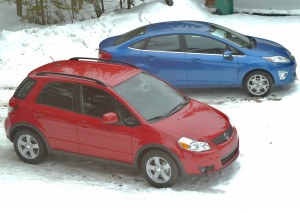
The Suzuki SX4, foreground, is an example of AWD fun in ice and snow, while the Ford Fiesta sedan proves front-wheel drive also has winter advantages.
By John Gilbert
When the auto industry changed over from the traditional front-engine/rear-drive to front-wheel drive, it not only provided flat floors and more spacious interiors, it instantly eliminated most of the treachery of winter driving, because of having the majority of weight over the wheels that not only drive the cars but do most of the braking and all of the steering, too.
Then along came all-wheel drive, which used to be available only on Audi and Subaru models, or otherwise required a truck or sport-utility vehicle to enjoy. But as we drive, slide and skid through this Upper Midwest winter-that-never-ended, it is worth noting how all-wheel drive has proliferated through the car industry. We’ve come a long way from the old truck-style 4-wheel drive that sent equal power to the front and rear axles, which meant that drivers could feel a tight binding up of the front wheels during a sharp turn, where the inside wheels don’t travel as far as the outside. Contemporary all-wheel drive adjusts power front and rear, as electronic components measure the tendency to spin, but also can alter the torque going from inside wheels to outside, in many cases.
When winter chose to send a last blast across the Upper Midwest to prove that March can still “go out like a lion,” it offered the chance to prove again how some cars perform well in winter, some don’t, and how some that would perform well on icy roads need better tires to do so. Consumers, and manufacturers, tend to forget that tires remain the only four contact points a vehicle has with the roadway, and suspension systems and tires that can make a car handle with great precision on dry roads might reduce rear-drive, front-drive and even all-wheel drive cars to white-knucklers in a storm.
Among the cars that stood out this soon-to-be-over winter, and even passed the “Duluth Hillside Blizzard” test, include the following:
Audi S5, A4 and A8, Cadillac SRX, Nissan Juke SV, Lincoln MKS, Subaru Impreza WRX, Volvo S60, Mitsubishi Evolution MR, Infiniti G37X, Ford Fusion, Taurus SHO, Suzuki SX4, Toyota Scion xD, Acura TL, and the Mercedes CL550 4Matic, and E350 4Matic wagon, and Porsche Panamera. Crossovers and SUVs that fit under the largest category were more predictably strong in foul weather, including the Ford Edge and Explorer, Chevrolet Equinox and Traverse, Dodge Durango and Nitro, Subaru Forester and Tribeca, Range Rover and Land Rover LR4, Volkswagen Touareg and Touareg Hybrid, GMC’s Terrain and Acadia, Porsche Cayenne, Hyundai Tucson, Kia’s Sorento EX and Sportage, Jeep’s Grand Cherokee and Patriot, and Mazda’s CX-7 and CX-9. Read more
Mercedes CL550 brings luxury for all seasons
By John Gilbert
There was an old joke about an artist displaying his latest painting, which looked a lot like a blank, white canvas until he was asked about it, and explained that it was a white cow, eating marshmallows, in a snowstorm. I spent a week trying to find artistic backdrops during a Minnesota winter week’s test-drive of a Mercedes CL550 Coupe, but every time I got focused, I thought about that joke.
That’s because we were hit with a 20-inch blizzard just before the new Mercedes CL550 showed up for me to drive for a week, and the car was a spectacular pearlescent “diamond white” paint job covering its low form that was as pleasing aesthetically as aerodynamically. Wherever I parked it, there seemed to be a white car with a white background. All week long. But that was the only thing reminiscent of a problem with the car and the climate.
Every year in the Upper Midwest, the reality of wintertime collides like a 20-inch blizzard with the glamor of owning and driving an expensive luxury car. The Mercedes CL550 might provide a remedy for that dilemma.
Most luxury cars are of conventional front-engine/rear-drive layout, which is comfortable and satisfying when it’s warm and pleasant outside. That can be year-round in warmer climates, or it can be spring, summer and fall in the chillier northern areas. Mercedes always has been out there, along with BMW, stressing front-engine/rear-drive, and also stressing that its high-tech traction and stability measures can get you through the winter.
That may work is some winter areas, where the occasional snowfall hits and then goes away, but a seemingly endless winter like the 2010-11 term, running from November into and presumably through March, makes you realize that even with the right tires mounted, there can be a lot of anxious moments. In most cases, you simply park your sports or luxury car and drive the SUV or “winter” car out of the other garage bay.
Mercedes, however, also has something called 4Matic, which is a technically-advanced all-wheel-drive system, and that can definitely be the perfect solution for the uncompromising luxury car buyer who demands style and sizzle and also needs to drive through winter’s worst moments. BMW has its “X” drive, also an AWD system that can be added as an option on most sedans and SUVs. In both the cases of Mercedes and BMW, the technology of their AWD systems has finally attained the level that for decades gave Audi, with its quattro, a clearcut advantage in snowbelt states. Read more
Reborn Explorer becomes a truck for all reasons
By John Gilbert
The timing was perfect. The Ford Explorer needed a complete makeover to have any chance of regaining its former popularity, and coming in 2011, the redesign just happens to coincide with the 20th anniversary of the Explorer. Combining better manners inside, outside, structurally, and under the hood, the sophisticated new Explorer was transformed into such an excellent total package it won the 2011 North American Truck of the Year award.
The Explorer predates the phrase “Sport Utility Vehicle,” or its now-ubiquitous SUV abbreviation, and if it didn’t invent the segment it certainly kicked the door open wide enough for dozens of competitors to drive through. The segment has undulated considerably in recent years, breaking off into crossovers and compacts when sales of larger SUVs went south as gasoline prices went north. Fuel prices are on the rise to $4-per-gallon again, and the thorough modernization of the Explorer crosses over uniquely from crossover to large SUV, wedging into position to capitalize in the greatly expanded category.
“Crossovers have a lot of advantages in packaging efficiency and miles per gallon,” said Jim Farley, vice president of global marketing. “But many consumers feel they are missing something from the dream of their old SUV. People still want to tow and do light off-roading. The Explorer is reinventing itself by being a true utility vehicle on the road, with good miles per gallon, plus having the advantages people used to give up when they bought an SUV.”
First test-drives of the new Explorer indicate it has succeeded in becoming thoroughly contemporary — a “truck” for all reasons, even if it doesn’t meet usual definition of a truck because of its sedan-based unibody construction. Despite the restructuring and loads of standard features, the pricing stands as $1,100 less than the 2010 Explorer right across the line. Base price is $28,995, rising to $31,995 for the XLT, and $37,995 for the Limited.
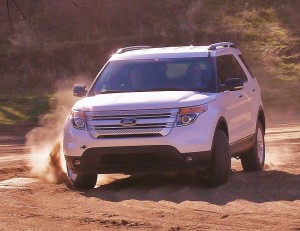
FWD-based Explorer spewed sand from front wheels in introduction test. Bright or body-color grille optional.
Explorer originated on the Ranger pickup platform, long before car-based crossovers moved in and took over. Car-based crossovers handle better and can get better fuel economy than heavier and less-sophisticated truck-based SUVs, so the Explorer leaves behind its aging platform for a new unibody design that is lighter, stronger and more compact, and swaps its rear-drive, or rear-to-all-wheel-drive layout for a front-wheel-drive to AWD plan. Its previous V8 has been replaced by Ford’s high-tech V6, as well.
Ford recently sold Volvo, but not before assimilating the solid Volvo S80/XC-90 platform to house the new Taurus sedan, and a revised version of that platform is under the new Explorer. Fittingly, the Explorer abandons its traditional squarish appearance in favor of a Taurus-influenced look, and a far more agreeable car-like ride and agility. It still meets all-wheel-drive demands, but it gets its torque from a basic front-drive system to AWD. It also can carry seven occupants in its three-row seating, carried in an interior designed after benchmarking industry pace-setter Audi, and boasting better interior quiet than the Honda Pilot and Toyota Highlander — two prime competitors.
Evolution MR evolves into car for all seasons
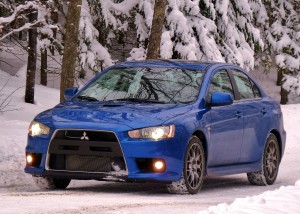
Snow-laden trees and icy roads were no match for the Mitsubishi Evolution MR -- with the right tires.
By John Gilbert
Wintertime can be a great equalizer. Especially when it’s extreme, like the winter of 2010-2011, which is setting records all across the Upper Midwest for snowfall and cold temperatures. But after all, what else is there to extreme winter but snow and cold? In the automotive world, virtually every car produced has enough good features to impress most people, but a lot of cars come up startlingly short when asked to perform in the worst winter conditions.
Then there is the Mitsubishi Evolution MR. The Evolution is a basic Lancer compact that has been thoroughly upgraded for high performance in every way, starting with a sizzling hot turbocharged engine and adding high-end components, improved beyond reasonable limits, to make sure all the parts can keep up with the performance generated by that engine.
When I first heard I was going to get a 2011 Evolution for a week between Christmas 2010 and New Year’s 2011, I was concerned about its driveability in that particular week, because Minnesota had been blanketed with a 10-inch snowfall on top of a sleet-formed ice base. I knew the Evolution has all-wheel drive, and I knew it is one of the most spectacular cars to drive on dry pavement, but I wondered if the all-wheel drive would simply mean all four wheels would spin rapidly while the car stayed in the same place.
My worries were put to rest immediately. The car was delivered wearing Dunlop Wintersport SP tires, instead of the summer high-performance rubber. To my great surprise, the car with those tires stuck on snowy and icy roads almost as impressively as the sticky summer performance tires make it stick to a road or racetrack. Read more


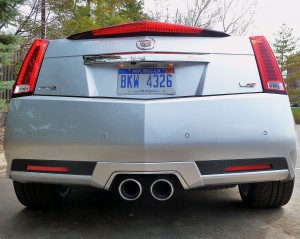
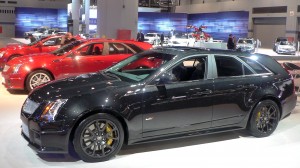
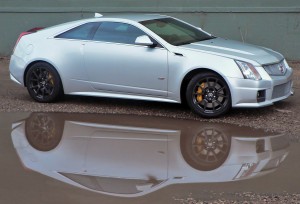

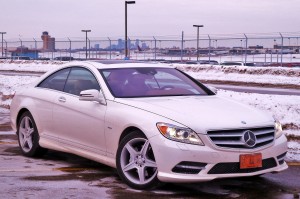
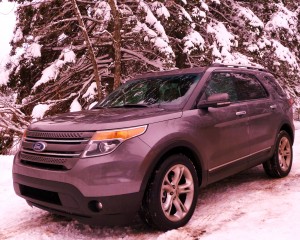
 John Gilbert is a lifetime Minnesotan and career journalist, specializing in cars and sports during and since spending 30 years at the Minneapolis Tribune, now the Star Tribune. More recently, he has continued translating the high-tech world of autos and sharing his passionate insights as a freelance writer/photographer/broadcaster. A member of the prestigious North American Car and Truck of the Year jury since 1993. John can be heard Monday-Friday from 9-11am on 610 KDAL(www.kdal610.com) on the "John Gilbert Show," and writes a column in the Duluth Reader.
John Gilbert is a lifetime Minnesotan and career journalist, specializing in cars and sports during and since spending 30 years at the Minneapolis Tribune, now the Star Tribune. More recently, he has continued translating the high-tech world of autos and sharing his passionate insights as a freelance writer/photographer/broadcaster. A member of the prestigious North American Car and Truck of the Year jury since 1993. John can be heard Monday-Friday from 9-11am on 610 KDAL(www.kdal610.com) on the "John Gilbert Show," and writes a column in the Duluth Reader.